Get PeakVisor App
Sign In
Search by GPS coordinates
- Latitude
- ° ' ''
- Longitude
- ° ' ''
- Units of Length

Yes
Cancel
Share ×

Scan the QR code and open PeakVisor on your phone
❤ Wishlist ×
Choose
Delete
In the leafy and luxuriant Alishan National Forest (阿里山國家森林遊樂區) lies an area important for wildlife conservation. Tashan Major Wildlife Habitat’s (塔山野生動物重要棲息環境) fertile land is home to many of Taiwan’s native animals. Tashan (塔山) is the only named mountain in this zone, measuring 2,484 meters (8,150 ft).
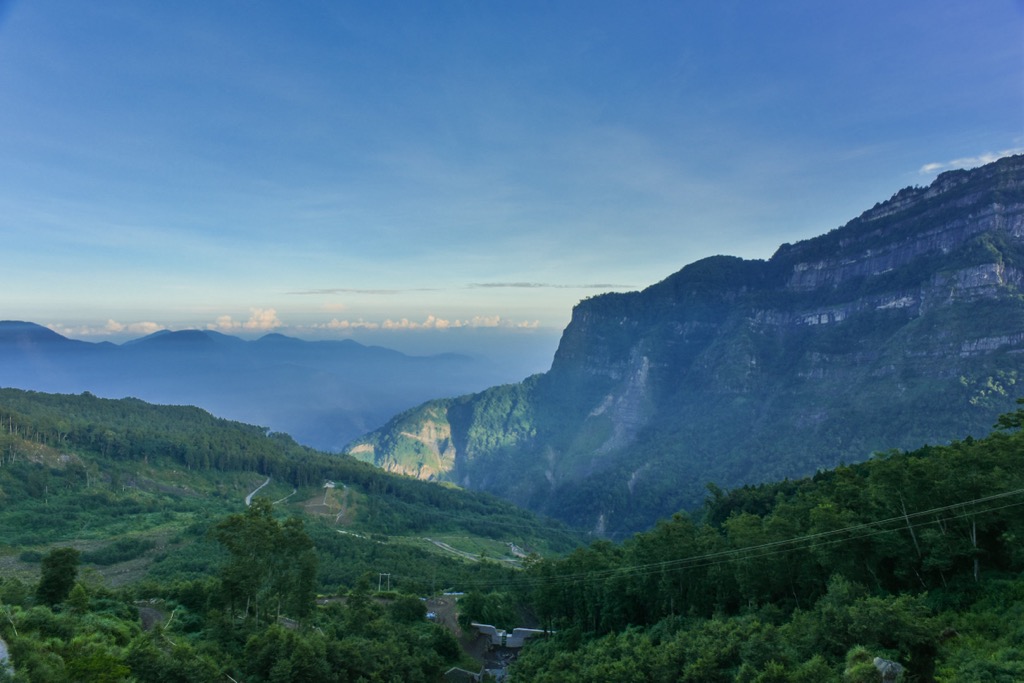
Tashan Major Wildlife Habitat comprises 696 ha (1,720 ac) of flourishing broadleaf and coniferous forests in conservation. Situated in Alishan Township (阿里山鄉) of Chiayi County (嘉義縣), the region is hilly and undulating, with an elevation range between 1,450 and 2,484 meters (4,757 to 8,150 ft).
As it sits in Alishan National Forest, Tashan Major Wildlife Habitat is surrounded by immense beauty. Considered to be one of Taiwan’s top eight scenic spots, Alishan National Forest has dramatic mountainscapes, a misty sea of clouds, dense woodlands, and is famous for its spectacular sunrises.

The verdant nature of both Alishan National Forest and Tashan Major Wildlife Habitat thrives in the wet climate. There is a yearly rainfall of 3,917 mm (154 in), while the humidity levels reach 85% in the damp forests. As the region sits at a medium to high elevation, the temperature ranges between 43 to 57°F (6 to 14°C) throughout the year.
A large portion of the primary forests was felled during Alishan Forest’s industrious logging past. However, conservationists succeeded in protecting native tree species, like cypress, pine, hemlock and Alishan cherry trees.
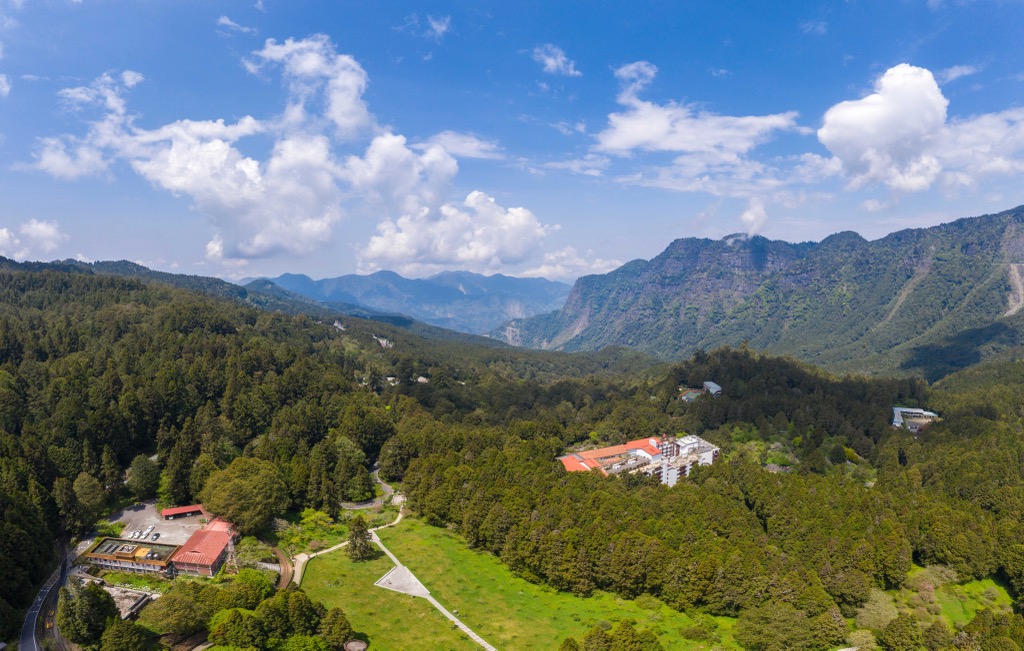
While Tashan Major Wildlife Habitat is immersed in Alishan’s mountainous forest, other outlying areas of interest are nearby. Yushan National Park (玉山國家公園) lies southeast of Tashan, while Guanziling Hot Springs (關子嶺溫泉) are southwest. Yunlin Lake’s Important Habitat of the Eight-Coloured Bird (雲林湖本八色鳥野生動物重要棲息環境) in the northwest, and Sun Moon Lake (日月潭) is in the northeast.
Tashan forms part of the Alishan Range (阿里山山脈), with its sierra concentrating in Alishan, extending northwards into Yunlin County (雲林縣) and stretching south as Kaoshiung City (高雄市). Covering a total of 1 named mountains, it is the fourth-largest mountain corridor in Taiwan.
Sandstone and shale from the Miocene epoch form Tashan’s rock strata.

Tashan Major Wildlife Habitat’s flora is a mixed broadleaf and coniferous forest. As the vegetation grows between the elevations of 1,700 to 2,400 meters (5,577 to 7,874 ft), they are mainly temperate and cold temperate plants. The remaining vegetation still native to the mountains are Taiwan hemlock, two-leaf pine, Taiwan red cypress and cypress trees, as well as Alishan elm and Alishan cherry.
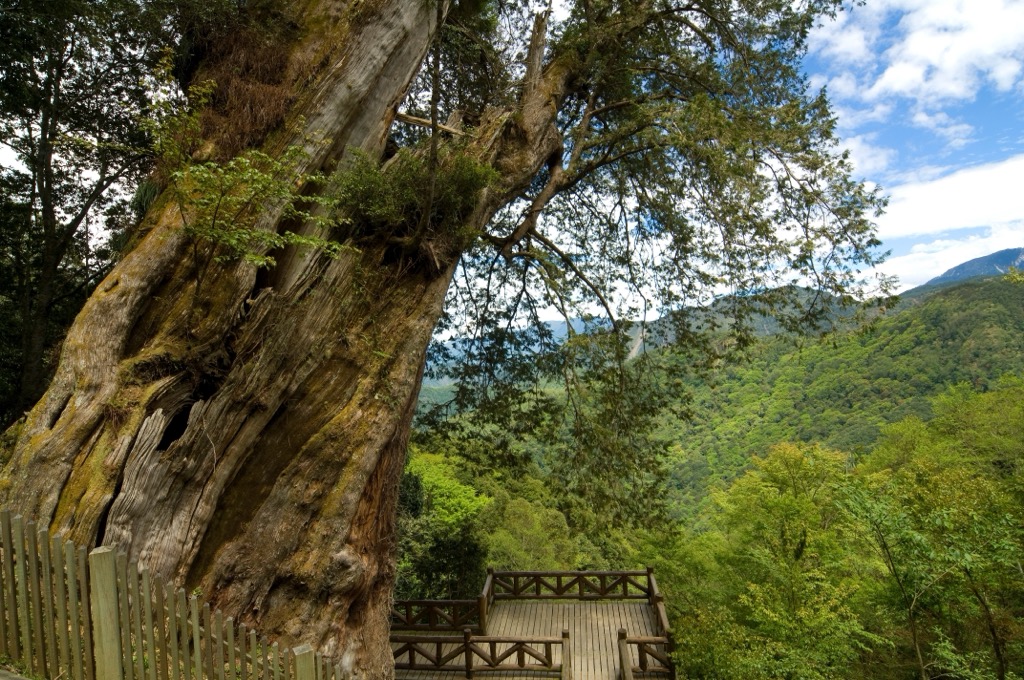
In terms of wildlife, many birds and amphibians are in Tashan’s dense woodlands. The blue-bellied pheasant, tawny fish owl, and the great horned owl are some of the common raptors.
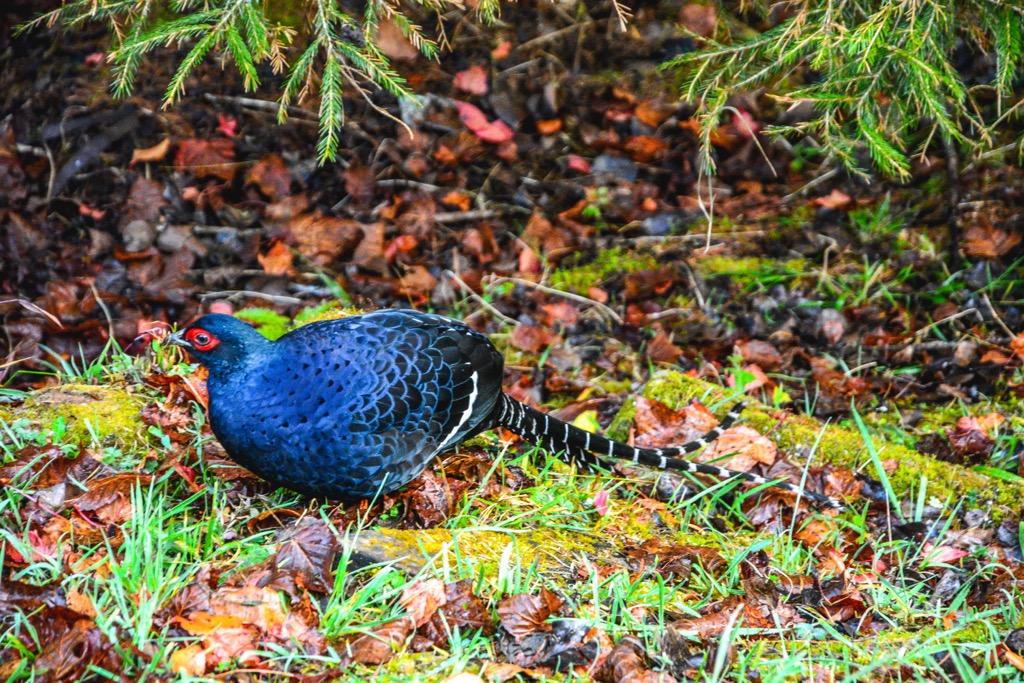
Tashan was once part of Alishan National Forest’s logging base. During the Japanese Occupation Era, Japanese officials penetrated Taiwan’s mountains, searching for timber. As a result of finding dense groves of cypress in the Alishan hills, the Japanese established a logging industry. Alishan, together with Basianshan (八仙山國家森林遊樂區) and Taipingshan (太平山國家森林遊樂區), were one of Taiwan’s three largest logging centres.

The Japanese built the historic Alishan Forest Railway to transport heavy timber logs to low-lying Chiayi City (嘉義市). Several villages flourished along this route, becoming train stops on the way between Chiayi and Alishan Forest.
In 1991, Taiwan officially outlawed logging; thus, Alishan Forests were spared from further culling. However, the damage had already taken place, as most of Alishan’s primary forests were destroyed by logging. Since then, local authorities’ afforestation efforts have seen the rise of native tree species, so Alishan’s woodlands are thriving and flourishing once more.
The major hiking trails and areas in and around Tashan Major Wildlife Habitat are:
Climb Tashan Hiking Trail for magnificent views of the jagged mountainous countryside and to witness the ethereal sea of clouds floating across the land. The path begins from Sister Ponds in Alishan National Forest and extends for 7.4 km (4.6 mi) until you reach the Tashan Observation Deck.
You’ll encounter a flourishing forest of broadleafs and conifers on your journey. You’ll also see the wispy presence of ferns and velvet-like moss coating the forest floor. The trail's final 1.7 km (1 mi) involves climbing a steep set of stairs. This can be taxing on the legs, but it's a great deterrent for the crowds, as you’ll have the sweeping views all to yourself.
From Tashan Observation Deck, you can observe the Central Mountain Range’s (中央山脈) rugged spine trailing across Taiwan’s backcountry. Yushan (玉山) stands tall in the near distance, and you can admire the emerald landscape of Alishan’s groves.
Witness Alishan’s sunrise spectacle from the prominent viewing spot on Zhushan (祝山). You can either drive, ride the Alishan Forest Railway to Zhushan Station, or hike the 1.8 km (1.1 mi) trail to welcome the first rays of amber morning sunshine.
At Zhushan Sunrise Platform (祝山觀日平台), you’ll have sweeping panoramic views of the lush Alishan hills and Yushan’s pointy pinnacle from where the sun peaks above. As it’s a well-known sunrise spot, you can climb to nearby Xiao Li Yuan Shan’s (小笠原山) best-kept secret octagonal platform for a more intimate viewing experience.
Once Alishan’s golden hour warms your heart and body, trek back to Alishan’s Zhoaping Park via the shaded Zhushan Sunrise Trail and inhale the fresh fragrance of the lush alpine forest.

Let nature astound you as you explore the Alishan Giant Trees Trail (巨木群棧道), consisting of two interlocking paths. A total of 41 Taiwan cypress and Taiwan red cypress trees occupy a shared space in this magical world of towering arboreals.
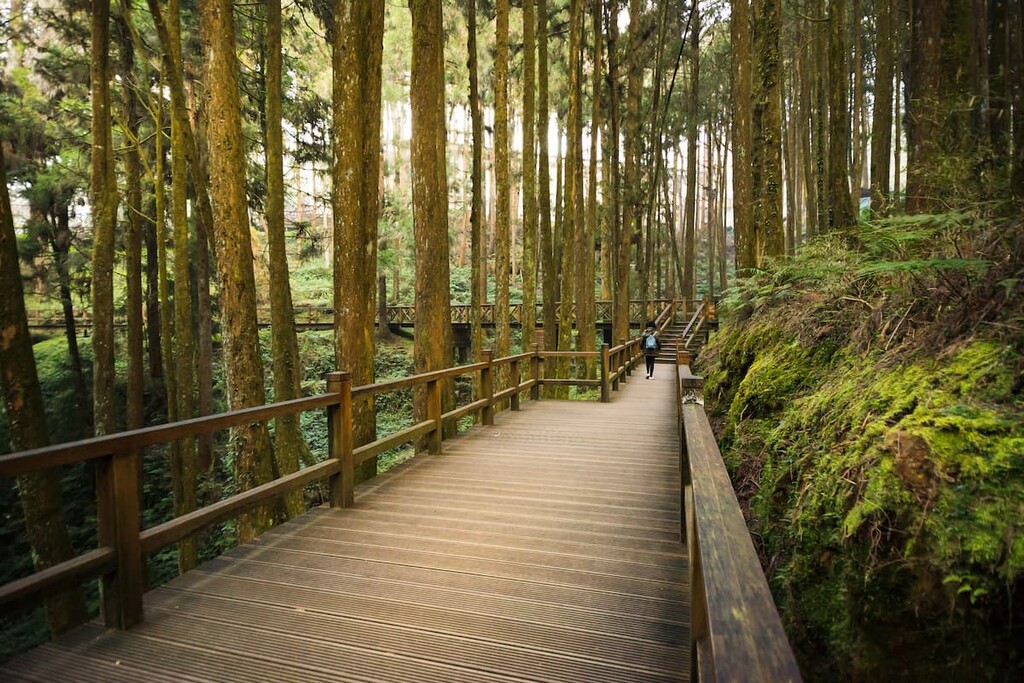
Trail 1 spans a short 600 meters (1,969 ft) and features the notable Thousand Year Cypress (千歲檜神木) and the fascinating Three-Generation Tree (三代木). The Spirit Tree Pagoda (樹靈塔) also joins this path, which honours the spirits of all felled trees, as does the Xianglin Tree (香林神木). At the end of the trail stands the fallen log of the Alishan Sacred Tree (阿里山神木遺跡), a 2,300-year-old and 50 meters (164 ft) tall giant with a hollowed center.
Then head to Trail 2, which includes the towering beauty of No. 28 Giant Tree (28號巨木). Indigenous plants such as Rhododendron Kawakami and Oleandra wallichii thrive on the tree’s bark. This soaring arboreal stands at 43.5 meters (143 ft) and bears a width of 13.1 meters (43 ft).
Embark on the wonderfully shaded path of the Mihu Hiking Trail (迷糊步道), bearing a thick grove of Moso bamboo. Stroll along the easy 3km (1.8 mi) course of gentle slopes and stone steps. Locals also know this trail as part of the Fushan Ancient Road, the first meeting point between the indigenous Tsou tribe and Han Chinese settlers.
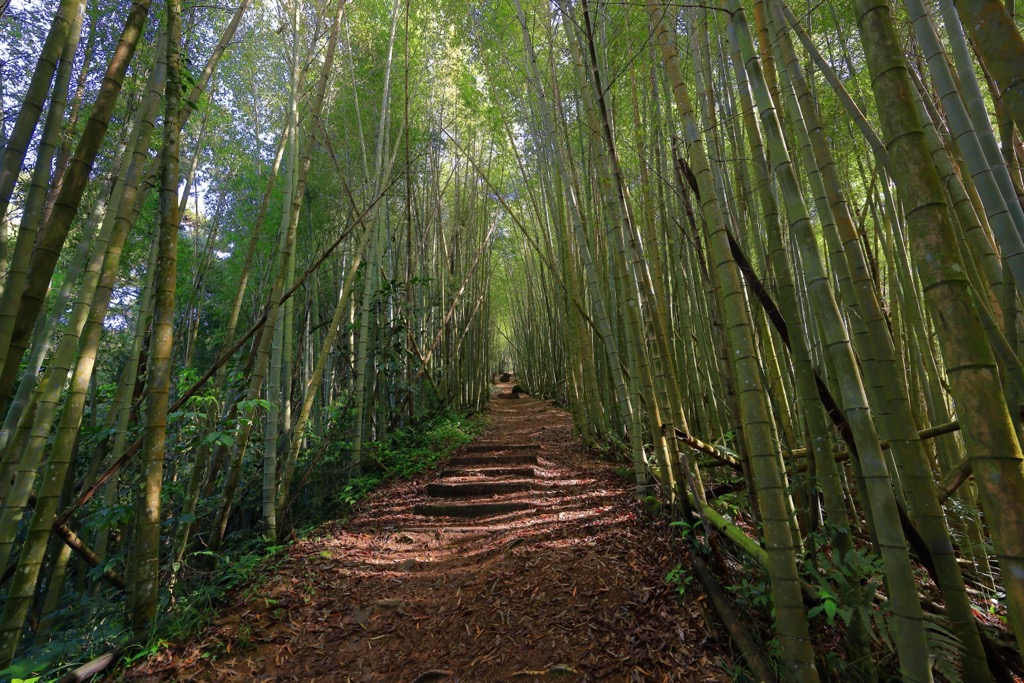
An ideal combination of lush foliage and traditional structures, you’ll notice the Tsou-crafted thatched gazebos and wooden suspension bridges. The path lowers towards the bubbling creek but then rises towards the forest. Take in the scenic view from the two suspension bridges of the towering bamboo stalks and extravagant surrounding greenery. As you enter the dark forest, feel the coolness overcome you in the stillness of nature.
If there is one place you have to visit, it’s the Shizhou Trails (石棹步道群). A network comprising five smaller trails, access Alishan’s pristine beauty as you adventure along the Mist, Tea, Sunset, Cloud, and Cherry Blossom trails. While the trails lie in close proximity, the scenery changes dramatically from the different paths.
Encounter a vibrant and aromatic cedar forest along the Cloud Trail and witness the sea of cotton candy perch on the surrounding rugged ridgelines. The Tea Trail hedges along fields of tea plantations that grow the Taiwanese speciality, Alishan High Mountain Tea.
In the springtime, the Cherry Blossom Trail bursts to life with pops of pink petals, while the Sunset Trail overlooks the mountainous horizon for glowing views of twilight’s display. Lastly, the Mist Trail traces the wild forests where misty mountain air hugs the land for an ethereal presence.
For the adventurous at heart, trek the Tefuye Historic Trail (特富野古道), an old prominent hunting ground and meeting spot for the Tsou people. During the Japanese Occupation Era, the Japanese built a railway on this path, chasing away the indigenous people from frequenting their ancient spot.
A more challenging hike than all the rest, Tefuye Historic Trail spans 6 km (3.7 mi) and begins from Eryuhan’s (兒玉山) base. While you won’t summit any hills, you will admire spectacular scenery on your walk and uncover abandoned Japanese police stations. Full of heart and history, it's a beautiful hike showing Taiwan’s majestic peaks and incredible nature. It’s particularly striking in autumn, with the honey-colored leaves illuminating the forest.
Along your journey, you’ll observe Taiwan’s tallest hill, Yushan, and its surrounding snow-capped peaks. You’ll also cross the changing landscapes of cedar forests and cherry blossoms that erupt in springtime with pink pastel hues and observe a rippling network of mountains and valleys.

When visiting Tashan Major Wildlife Habitat, you can opt to stay in the mountainous settlement of Alishan Township. While super convenient, it’s also popular among locals and international tourists for its scenic beauty. However, if you want to stay in a city, then Chiayi City is the nearest to Tashan Major Wildlife Habitat.
If you ask any Taiwanese local about Alishan, you’ll notice their eyes light up as they describe the fascinating wonderland of deep mountain groves and plumes of springtime cherry blossoms. Considered one of Taiwan’s top eight scenic spots, you’ll be doing yourself a favor when you choose to stay in Alishan Township’s enchanting land.
One of Alishan National Forest’s most iconic attractions is the Alishan Forest Railway. Initially constructed to transport timber from the high mountain forests to Taiwan’s low-lying cities, the Alishan Forest Railway still operates today. Take a ride through the thick cedar and cypress groves and notice Taiwan’s blue heavens disappear as a flourishing forest canopy shades the woods. Three different routes transport you to Zhushan Sunrise Platform, to the Giant Tree Trail and also all the way to Chiayi City.

Another well-known spot in Alishan National Forest is Sister Ponds (姊妹潭). Famous for both its scenery and legend, locals believe that two sisters drowned themselves in this pond after falling in love with the same man. They chose their sisterly bond over the man and thus jumped into the pond, never to be seen again. You can walk the 50 meters (164 ft) path that traces the two alpine lakes where a wooden walkway leads two thatched love pagodas on the water.
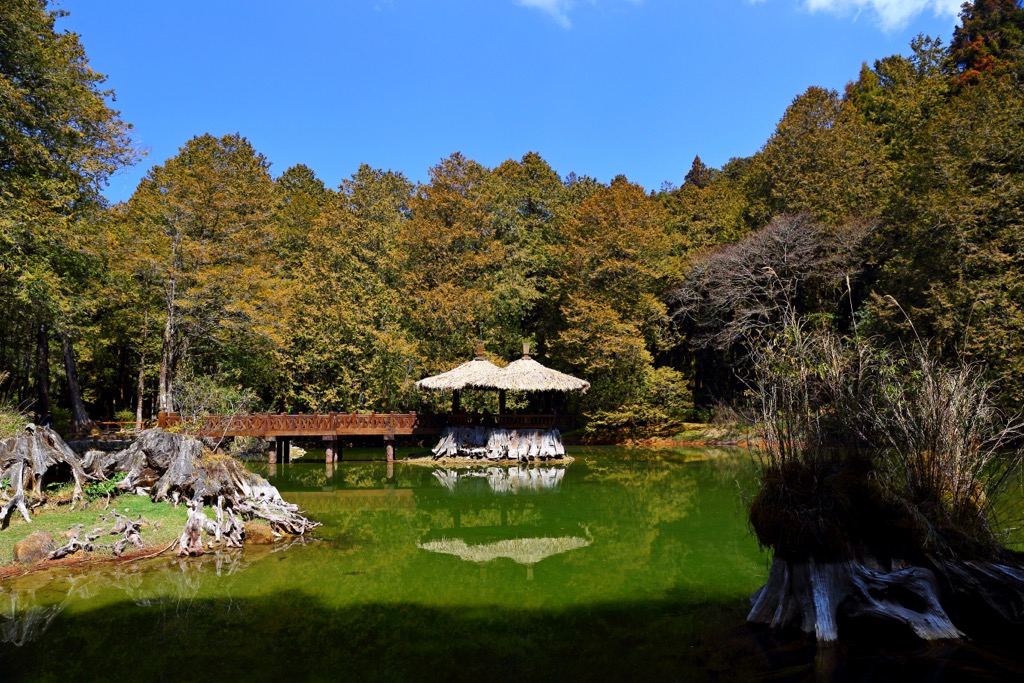
For another outdoor adventure, visit the pristine river valley of Danaiku Nature Ecological Park (達娜伊谷自然生態公園). Known for its teeming population of shovel-nosed minnows, the stream ecology and flourishing landscape is a picture-perfect paradise. With outlooks onto the craggy countryside, crystal-clear river waters and thriving forest growth, Danaiku Nature Ecological Park will not disappoint. You can also watch a performance by the Yi tribe, who inhabit Danaiku’s Shanmei Village and eat their local speciality dishes.
Lying south of the Jianan Plain (嘉南平原) is Chiayi City, a mostly flat region with abounding beauty. Nicknamed Peach City after its abundant peach groves, this flowering city attracts tourists for its convenient location close to Taiwan’s best nature spots.

Up in the hills south of Chiayi City is the mountain retreat of Guanziling Hot Springs (關子嶺溫泉). While technically in Tainan City, Guanziling Hot Springs is closer to Chiayi City. This mud hot spring also contains salt and sulfur, making your skin feel moistened and luxuriously radiant. Then explore the lush hillside where you can overlook the surrounding peaks of Dadongshan (大凍山), Zhentou Shan (枕頭山), and Hutou Shan (虎頭山).
An area of historical interest in Chiayi City is the Hinoki Village (檜意森活村). Once a residence for Japanese loggers, the little community displays typically Japanese wooden architecture. The well-preserved houses are now coffee shops and boutique stores, where you can spend your day wandering around, admiring the old village and treating yourself to coffee and pastries.
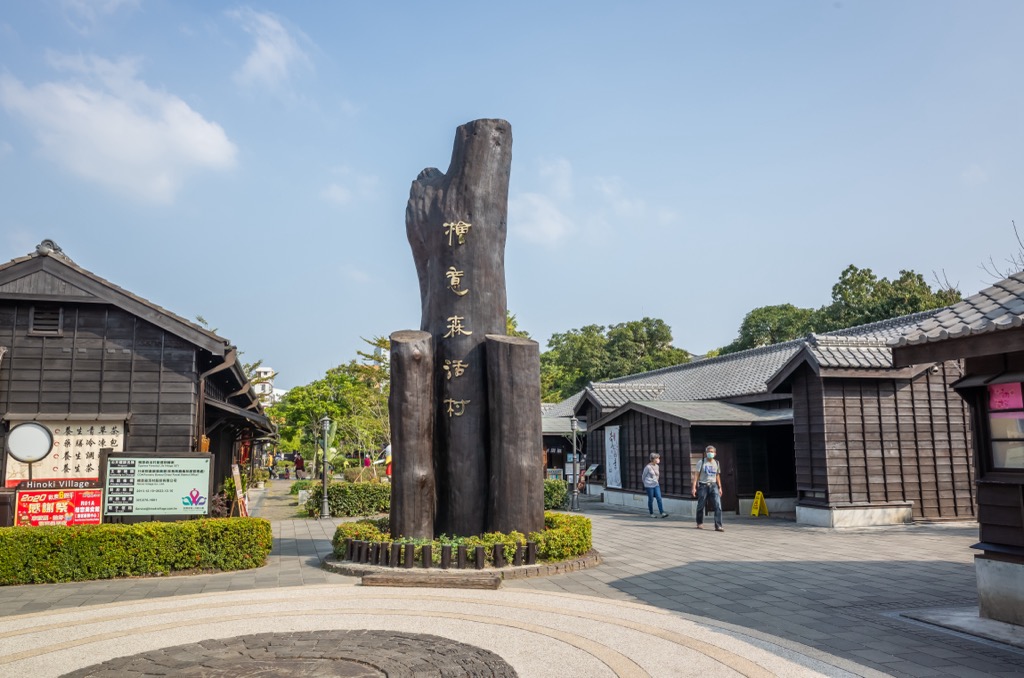
Finally, head to the Sun Shooting Tower (嘉義市忠烈祠) in Chiayi Park for magnificent views over Chiayi City. Head to the viewing deck on the bronzed cylindrical structure measuring 40 meters (131 ft) in height, which is a sight to see in itself. Bearing a hollow strip in the middle, the Sun Shooting Tower resembles Alishan’s Sacred Tree. From the observation deck, you can gaze over the Peach City and its surrounding plains and southern hills.

Take the Taiwan High-Speed Rail (HSR) or local express train (TRA) from Taiwan’s major cities to Chiayi City. From there, you can take the Alishan Forest Railway from Chiayi City to the hills of Alishan National Forest, where Tashan Major Wildlife Habitat is located. However, you need to prebook your tickets as its a popular trip.
Alternatively, you can board the hourly 7322 bus from Chiayi HSR Station, which transports you to Alishan National Forest. Or, you can rent a car or scooter, and drive 66 km (41 mi) to Alishan. Once you enter the forest, follow the guides and directions to Tashan Major Wildlife Habitat.
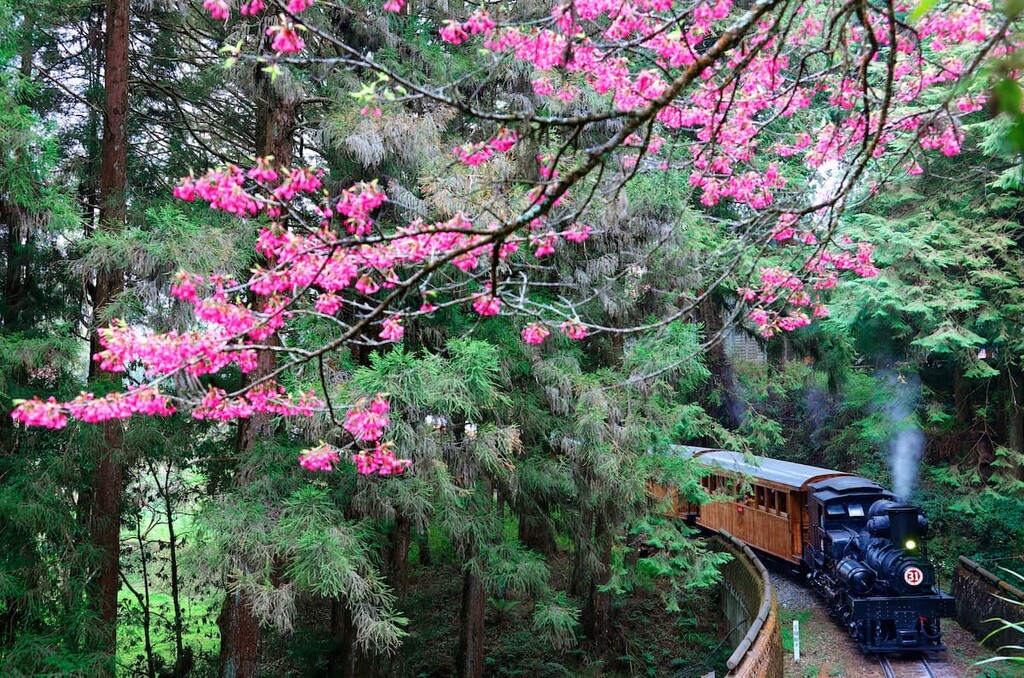
Explore Tashan Major Wildlife Habitat with the PeakVisor 3D Map and identify its summits.








